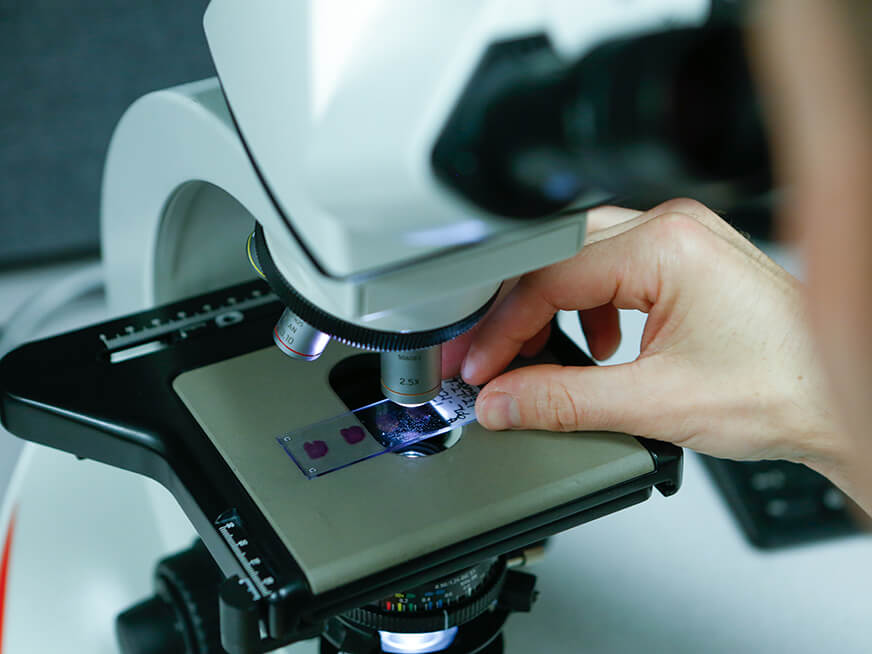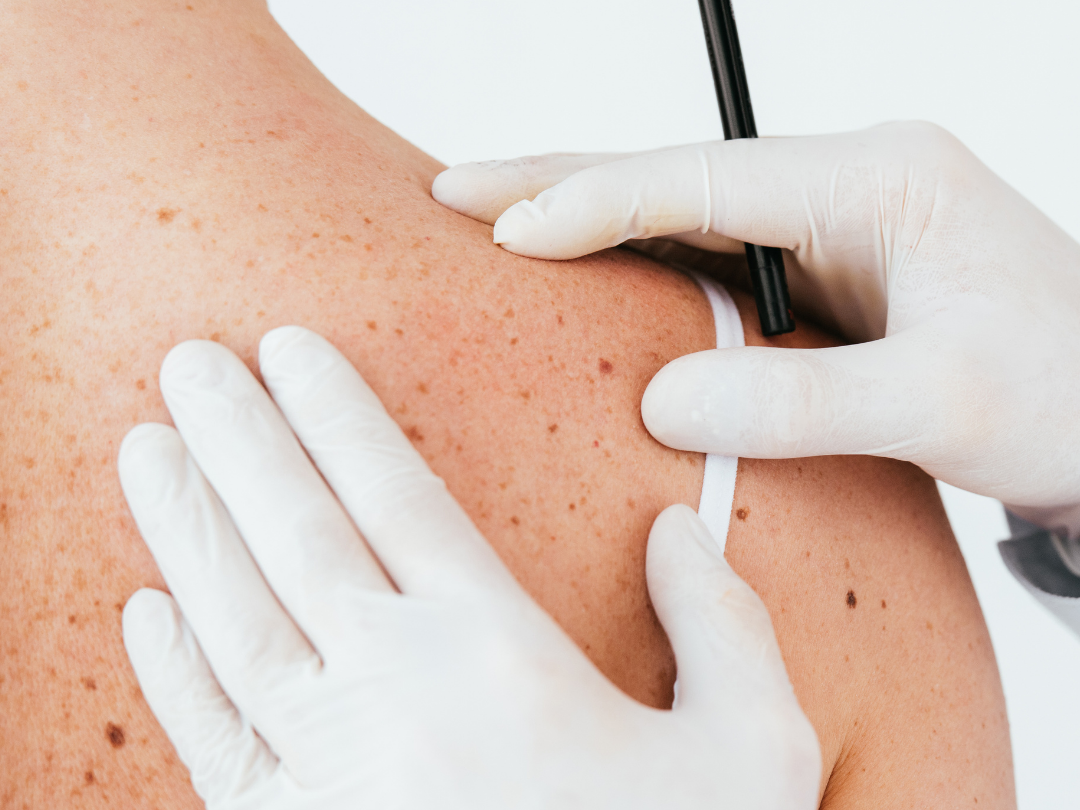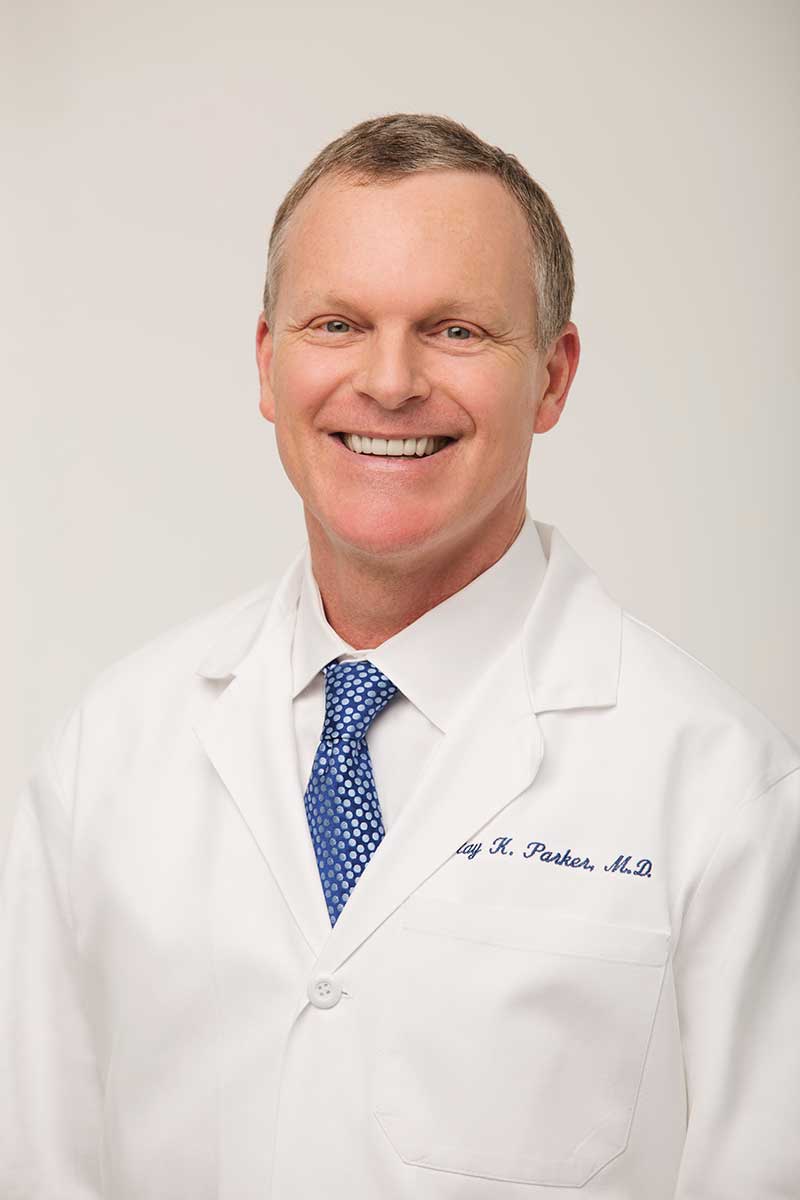Mohs Surgery
Precision Skin Cancer Removal for the Little Rock Area, Central Arkansas, and Beyond
Patients with a skin cancer diagnosis naturally want the most effective treatment possible. For certain cancers, the ideal approach is a sophisticated excision technique that involves methodical removal and examination of tissue in the treatment area until all of the cancer cells are gone. This is known as Mohs surgery. The Little Rock area’s Dermatology Group of Arkansas has not one, but two dermatologists on staff who are specially trained, and board certified in this “micrographic” technique, which provides a cure rate of 95 to 99 percent for cancers that haven’t been previously treated. That is the highest cure rate out of the available options for treating basal cell carcinoma and squamous cell carcinoma.
Mohs surgery is especially good for treating cancerous lesions and tumors that look small, but that expand significantly below the surface—like an iceberg in the ocean. Cancerous cells can often be found beyond what is visible, extending deeper than expected into the skin, as well as developing along vessels, nerves, and cartilage. Excision procedures that leave cancerous cells behind can allow the disease to continue to spread. Mohs surgery is designed to “track” and remove all of a lesion’s cancerous cells to maximize long-term health.
Contact Us Today
Schedule your consultation for Mohs surgery in the Little Rock area and beyond. Call us at the Dermatology Group of Arkansas at 501-227-8422.

How Does Mohs Surgery Work?
If you’re researching skin cancer treatments, it makes sense to learn as much as you can about Mohs surgery so you can determine whether it’s the right option for you. Simply put, Mohs surgery involves removing tissue layer by layer until no cancerous cells are detected. The procedure is done in stages, including lab work, while the patient waits.
The University of Wisconsin’s Dr. Frederick Mohs developed Mohs surgery in the 1930s, creating a procedure that involves several specific steps for removing cancer cells without harming the healthy, surrounding tissue.
First, the provider marks the outline of the visible part of the cancer on the surface of the skin.
Next, the area to be treated is numbed with a local anesthetic, administered with a needle.
Once the area is numb, the provider begins the most painstaking aspect of Mohs surgery: removing the cancer in a methodical way. First, the visible cancer and an extra layer of skin are taken from the treatment area, after which the patient is bandaged and encouraged to rest comfortably. While the patient waits, the surgeon takes this layer of skin to the laboratory and processes it into slides for viewing under a microscope. Processing involves cutting the tissue into sections and staining them.
Next, the surgeon checks all of the edges of the skin sample, including the bottom, for signs of cancer cells. Results are marked on a “Mohs map” of the tissue section. If cancer cells are present, another sample is taken—but only from the areas where the cells were found. Thanks to the lab work, the surgeon knows the exact area where the cancer cells were found.
This process is unique to Mohs surgery and allows the surgeon to “follow” the Mohs map to find cancer in the skin and be sure all traces of it are being cut out without waiting for results to come back from an external lab.
The Mohs surgery continues in this way, repeating the back-to-back excision and examination process, until there are no longer signs of cancer cells in any of a sample’s margins or at its base. Seeing what are known as “clear margins,” a surgeon can be confident that all of a cancer’s extensions or “roots” have been removed.
Lastly, plans are made to repair the wound made by the Mohs surgery. The vast majority of these repairs are handled in our office, where we perform linear closures, grafts, flaps, and more. Our primary goal is to remove the cancer for the benefit of your long-term health, but we also know that minimizing visible scarring is important to our Mohs surgery patients’ self esteem.
Since every patient’s cancer develops in a unique way, there is no standard length of time to expect for Mohs surgery. The Mohs surgery process tends to move relatively quickly, but we encourage patients to set aside a day for the procedure, just in case.

What Sets Mohs Surgery Apart from Other Cancer Treatments?
The main benefit of Mohs surgery is its cure rate, made possible by the process of checking all of the edges and base of the cancer under a microscope at the time of surgery.
The second benefit of Mohs surgery is that the size of the surgical wound is as small as possible, because only the skin affected by the cancer is removed. This results in less of a chance of damage to important structures that may be near the cancer, such as the eyes. It also means that the scar will be smaller once the surgical wound has healed. For these reasons, Mohs surgery is ideal for cancers that develop in the skin of particularly delicate, sensitive, or highly visible areas. Mohs surgery patients are often those with basal or squamous cell cancer found in the skin of their nose, on their ears, or on their lips, as well as those with cancers on the frequently sun-exposed head, neck, and hands.
Other advantages include the fact that Mohs surgery is a single-visit, outpatient surgery, only local anesthesia is required, it provides precise results, healthy tissue is spared, and the lab work is done on site. By allowing the surgeon to ensure that all of the skin cancer has been removed, Mohs surgery reduces the need for other types of treatments or additional surgery.
Because Mohs surgery is such a unique approach to treating certain cancers of the skin, it requires specialized education and training. At the Dermatology Group of Arkansas, Dr. Garrett Nelson and Dr. Matt Graham are Mohs surgeons with board certification and extensive experience in the advanced technique.
In addition to our dermatologists specially trained in Mohs surgery, our practice includes a highly trained surgical staff, histotechnicians who prepare and study tissue samples, and an on-site lab.
Contact Us Today
Contact the Dermatology Group of Arkansas today if you are interested in learning more about Mohs surgery in the Little Rock area. Call 501-227-8422.




Meet Your Doctors
Meet Your Doctors
How Can You Prepare for Mohs Surgery?
Even though Mohs surgery is an outpatient procedure, there will still be some steps and precautions you will need to take while you’re getting ready for your visit. There are several ways for you to prepare for Mohs surgery.
It’s likely that you will be asked to avoid sun exposure and wear sunscreen daily in the time leading up to the procedure. Your surgeon may advise you to stop taking certain medications. Make sure that they are aware of any medications or supplements you are currently taking, since certain types can thin the blood and make it more likely for you to bleed from Mohs surgery.
Since you won’t know how long the Mohs surgery will take, clear your schedule and plan for the procedure to possibly take all day—just in case it goes longer than expected. Wear warm, comfortable and loose-fitting clothing, and bring something to keep you entertained, such as a book or magazine for when you’re waiting.
If you smoke, refrain from smoking for at least two weeks before and two weeks after surgery. Cigarettes interfere with wound healing, so it’s best to stay nicotine-free.
You can bathe as normal before surgery, but avoid applying sunscreen, makeup, or moisturizer to your skin, especially in the area where the surgery is being performed.
Who Is a Candidate for Mohs Surgery?
Mohs surgery is ideal for patients who want a highly effective treatment and to minimize the resulting scars as much as possible, especially for cancers on the face and neck. Patients who have cancers that are more aggressive or have a more invasive pattern can also benefit from the Mohs surgery procedure.
If you don’t have any other significant health problems and can handle spending several hours at the office, Mohs surgery could be right for you.
Patients who have a basal cell carcinoma (BCC) or squamous cell carcinoma (SCC) tend to be ideal candidates, though some melanoma patients may be eligible for Mohs surgery.
Mohs surgery is not advisable for superficial, small, or low-risk BCCs or SCCs on non-sensitive areas of the body. Other treatment methods may be more suitable for these types of skin cancers.
How Is Skin Repaired After Mohs Surgery?
Once the skin cancer has been completely removed with Mohs surgery, repair work begins. Many Mohs surgery wounds can be closed with a simple line of stitches. Other wounds close best if the body is left to heal naturally without further surgery. Some wounds may require a more complicated form of repair, including flaps or grafts that involve skin moved from donor sites to close the wound.
No matter the approach, patients who choose Mohs surgery enjoy the smallest possible wound for their cancer.
What Are the Results and Recovery Like from Mohs Surgery?
One of the major advantages of this procedure for patients is that they will know right away that it worked. Mohs surgery provides immediate results, and the lesion is completely removed.
The length of recovery times vary depending on the location of the skin cancer that was removed, how extensive the procedure was, and other factors.
It’s important that the incision site be kept clean and dry while recovering from Mohs surgery. It’s also recommended that Mohs surgery patients limit their exposure to sunlight, apply sunscreen regularly, and engage in good skincare practices after having this surgery.
What Other Cancer-Related Services Are Available for the Little Rock Area?
The Dermatology Group of Arkansas offers a range of skin cancer treatments to be able to help a wide variety of patients. Different treatment options work better for different cancers. In addition to Mohs surgery, we also provide a variety of treatments for the destruction of cancers, such as electrodessication and curettage, standard excision, topical chemotherapy, and systemic chemotherapy. When appropriate and if warranted, we will also refer patients to outside providers. Our goal is to maximize your chances of having the best possible outcome.
Getting an accurate diagnosis and starting a treatment plan as early as possible is crucial for any skin cancer patient who wants the best outcomes available. Our team performs routine full body skin scans so we can identify suspicious moles and other lesions that require a closer investigation. Biopsies allow us to have small samples tested to determine whether cancer cells are present.
Once we are able to make a diagnosis, we can get started on treating the cancer. We will be with you to provide you the support you need throughout your journey of healing, whether that includes Mohs surgery or a different approach.

Contact Us Today
Contact the Dermatology Group of Arkansas today for Mohs surgery in the Little Rock area. Call 501-227-8422.
Stay In Touch
Our team at Dermatology Group of Arkansas is looking forward to hearing from you and building a relationship to help you get your best skin possible. Follow us online, reach out to us directly to set up a meeting, or both!







